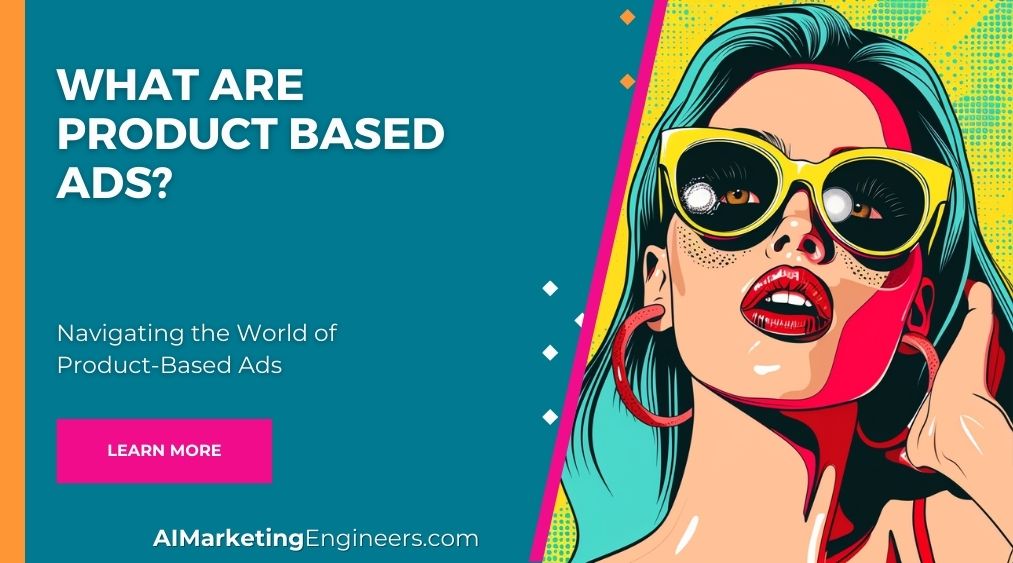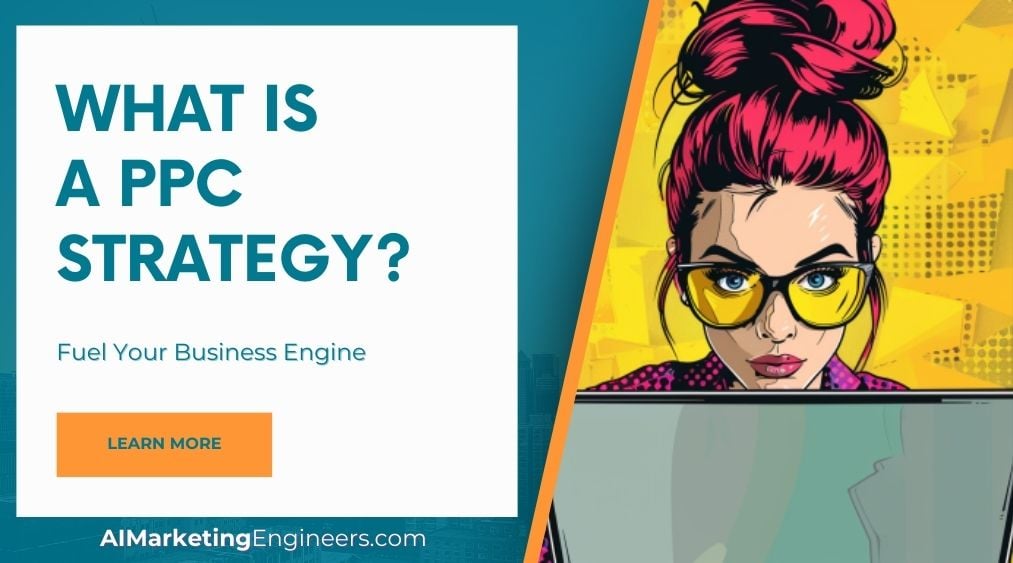Key Takeaways
✅ Definition: Get to grips with product-based ads; they’re those vibrant, eye-catching commercials focused on individual products, showcasing all that’s good about them to entice potential buyers.
✅ Advertising Channels: Discover the playgrounds where these ads love to hang out—the social media parks, the bustling city streets of search engines, and the buzzing marketplaces of e-commerce.
✅ Key Elements for Effectiveness: Learn the recipe for ads that not only catch the eye but lead to a click. It’s a mix of mouthwatering images, irresistible copy, and a call-to-action that gets customers clicking faster than you can say “add to cart”.

Introduction
Ever caught yourself looking at a product online, only to find it following you around in ads as you move from site to site, like you’ve got your own personal shopper nudging you to buy it? That’s product-based advertising at work. It’s everywhere these days, and it’s no wonder because they are reshaping how businesses connect with customers. These aren’t just ads; they’re like matchmakers, introducing your products to just the right people.
In the digital square dance of today’s market, the right ad move can mean catching the eye of the perfect customer. What kind of dance moves will you learn here? We’re talking about classy display ads that act like window displays of the internet, snazzy video ads that can go viral, undercover native ads that blend in like chameleons, and shopping ads that practically do the selling for you.
But it’s more than just showing up; it’s about showing off smartly. Intrigued on how to use consumer behavior insights to make your ads more appealing? How do you pick the best online stage—be it social media, search engines, or mobile apps—to showcase your products? And the big question: once the show’s over, how do you know if it was a hit?
We’ve lined up all that and more, so hold onto your hats. This guide is your ticket to mastering the art of product-based advertising, turning clicks into customers, browsers into buyers, and ads into action. It’s time to turn that curious click into a satisfying sale!
Top Statistics
| Statistic | Insight |
|---|---|
| Global Digital Ad Spending: Reached $378 billion in 2020, significant contribution from eCommerce product ads. (eMarketer, 2021) | Every digital nook, where folks click and scroll, is evolving into a marketplace brimming with product ads vying for attention—and dollars. |
| Online Video Ad Spend: Video ads are expected to be over half of display ad spending, hitting nearly $65 billion. (Statista, 2021) | Why read when you can watch, right? Video ads are the billboard of the internet age—snappy, engaging, and they’re everywhere! |
| Click-Through Rate (CTR) for Shopping Ads: Averaged at 0.66% in Q2 2021. (WordStream by LOCALiQ, 2021) | Imagine every hundred pairs of eyes that glimpse at a product ad, and just a little over half are intrigued enough to take the plunge. That’s the deal with shopping ads. |
| Discovering New Brands: Millennials and Gen Z mostly encounter new brands via social media. (Think with Google, 2021) | Social media isn’t just for selfies and viral dances; it’s where the younger crowd stumbles upon their next favourite thing. |
| Importance of Mobile Ads: Mobile devices are used for over 50% of global web traffic. (StatCounter Global Stats, 2021) | Keep an eye on your smartphone—it’s not just a device but a shopping mall in your pocket, and ads are the storefronts. |
Crafting Irresistible Product-Based Ads
You know those banner ads that catch your eye with products you just can’t ignore? Or those pre-roll video ads that make you delay your skip just to see what they’re about? They’re not magic; they’re carefully crafted messages designed to make you stop and look. And it’s not about shouting the loudest; it’s about speaking directly to you, in a language that you understand and appreciate. Ever felt like an ad was made just for you? That’s a marketer doing their job right.
Deciphering Consumer Thought Patterns
Have you ever caught yourself clicking on an ad without quite knowing why? It might be because someone has done their homework on consumer behavior. They’ve probably spent hours looking at trends and understanding what makes their audience tick. If you think about it, it’s a bit like being a detective, where clues come from data and patterns emerge that can predict what buyers might do next. What makes an ad irresistible to you?
Picking the Right Stage for Your Ads
So, you have this shiny ad ready to go, but where do you put it up? Your choice of platform can feel like picking a theater for a Broadway show. Do you go for the glitzy lights of social media platforms, the bustling crowds of search engines, or maybe the curated shop windows of e-commerce sites like Amazon? Here’s a thought: the best platform is where your audience loves to hang out. Ever noticed how some ads just seem to be wherever you are?
Cracking the Code of Ad Success
How can we tell if an ad’s hit the jackpot? Well, it’s not enough to just cross your fingers and hope. Marketers get down to business with some performance metrics—things like click-through rates, conversion rates, and overall engagement. It’s like taking the ad’s temperature to see if it’s healthy or needs a bit of a tweak. Ever wondered if those views and likes actually mean business?
With a keen eye on these aspects, marketers can whip up product-based ads that not only look good on the digital shelf but also speak to hearts, creating a genuine desire to engage with the product. So, think about it—what was the last ad that made you stop scrolling? More importantly, what will your next ad make someone else do?
Understanding Types of Product-Based Ads
Have you ever caught yourself staring at an ad banner on a website, thinking, “Wow, that looks interesting”? Or maybe you found yourself halfway through a video ad before your YouTube video, nodding along to the catchy jingle. There are all sorts of ads out there—like the ones camouflaged within the articles you enjoy or those shopping ads that pop up with just the perfect pair of shoes you were thinking of. These are all different types of product-based ads, each with their own unique ways of getting to you. They’re crafted to blend into your online activities, hoping to entice you without being too intrusive. Think of them as little signposts pointing you towards products that ‘somehow’ match your interests.
AI Marketing Engineers Recommendation
Recommendation 1: Leverage dynamic retargeting for your product based ads: You know when you’re browsing online, looking at a pair of shoes, and suddenly those very shoes start popping up in ads everywhere you go? That’s dynamic retargeting – it’s like the internet’s way of reminding you, “Hey, remember these? You liked them!” Now, what if you could use that same nifty trick for your products? Data shows retargeted customers are more likely to convert, so go ahead, give your potential customers a little nudge by showing them what they’re already interested in. Trust me, more often than not, they’ll appreciate the reminder.
Recommendation 2: Stir emotions by storytelling within your product advertisements: Ever watched an ad that tugged at your heartstrings? Made you laugh, or even better, made you think, “Wow, I need that!” That’s storytelling at its finest – it connects with us on a personal level. Instead of just showcasing your product, weave it into a narrative. Tell a story that resonates with your audience’s desires, their triumphs, and even their little everyday struggles. Current trends suggest people crave authenticity, they want to see something real – so give them a story where your product isn’t just a thing to buy; it’s a character that plays a part in their life story.
Recommendation 3: Optimize for mobile using vertical visuals and quick-loading features: Are you reading this on your phone? Chances are you’re nodding. Everyone’s glued to their mobile devices and your ads need to fit perfectly in that hand-held screen. Opt for vertical visuals because that’s how people hold their phones, and nobody’s got the time (or patience) to turn their screen. Also, make sure your ads load faster than people can say “Next!” – we’re talking milliseconds. Why? Because slow-loading ads are the number-one buzzkill for interest. You’ve got that tiny window when they’re scrolling to grab their attention – don’t let a slow load time be the reason you miss it.
Conclusion
So, what have we really learned about product-based ads along this journey? First, they’re more than just fancy pictures or videos scattered across the internet—it’s a strategic way of reaching out and talking to the right people. It’s about getting that perfect pair of shoes or that must-have gadget in front of folks who actually want them. And it isn’t just about grabbing someone’s attention; it’s about holding onto it, maybe even getting people to take that next step, you know, like actually buying the thing.
Remember the winning recipe we talked about? Let’s quickly run through it again: Show off compelling visuals, keep your messaging clear, nudge with that call-to-action, and make sure you’re chatting up the right targeted audience. But the conversation doesn’t stop after the ad goes live. Nope. It’s about understanding the people you’re talking to, tuning into what they like, where they hang out, and how they shop.
Choosing where to place your ads? That’s like picking the right party to go to. You want to be where your peeps are, whether that’s Instagram, Google, or squeezed between levels on their favorite mobile games. And just like at a party, you want to make a good impression, so keep an eye out on how your ads are doing, and if something doesn’t work, don’t be afraid to change it up.
Take a deep breath, and when you’re ready, dive into that wonderful world of product-based advertising. The beauty of it all is that there’s always room to grow, tweak, and turn all those insights into real connections and, ultimately, sales. Got that fire lit inside you? Good, now go get ’em, tiger!
FAQs
Question 1: What are product-based ads?
Answer: Product-based ads are tailored to highlight and promote specific products or services. They show off what’s special about what you’re selling, tempting people to buy by flaunting the good stuff – the features, the benefits, and the things that make your product a cut above the rest.
Question 2: What platforms can I use for running product-based ads?
Answer: Oh, there’s a whole bunch of online hangouts where you can showcase your product-based ads. You’ve got your social media giants – Facebook, Instagram, Twitter, LinkedIn – and then there’s Google and Bing for search engine ads. Don’t forget online marketplaces like Amazon and Etsy! Plus, there’s a sea of other websites where you can spread your ads through display networks.
Question 3: How do product-based ads differ from brand awareness campaigns?
Answer: Picture this: product-based ads are like laser-focused beams shining a spotlight on your specific products, asking people to take action, like ‘Buy Now!’. Meanwhile, brand awareness campaigns are more like a warm, broad light – they’re all about getting your brand’s name out there, building trust, and making sure people remember you.
Question 4: What are some best practices for creating effective product-based ads?
Answer: So you want to make ads that actually work? Rule of thumb – use eye-catching images, keep your message short and to the point, shout out what’s unique about your product, and tell people exactly what you want them to do next. Then, make sure you’re talking to the right crowd and always, always tweak and improve based on the numbers – think click rates and such.
Question 5: How can I measure the success of my product-based ads?
Answer: It’s all about the numbers! Keep an eye on how many people see your ads, click on them, and what happens after that click. Look at your ad spend versus the returns, the cost to snag a customer, and how much they’re worth over time. Ultimately, check the dollars rolling in from the products you’re advertising. That’s your scorecard.
Question 6: Can I use retargeting in product-based ads?
Answer: Absolutely! Retargeting is like that smart friend who reminds you about that product you looked at once and then forgot about. It’s a clever way to bring back folks who’ve shown a flicker of interest and nudge them towards making a purchase.
Question 7: Are there any advanced strategies for optimizing product-based ads?
Answer: Want to play the ad game like a pro? Test different versions of your ads, mix it up with dynamic formats, flaunt positive reviews, and get smart with remarketing. To top it off, get into the nitty-gritty of machine learning to fine-tune who sees your ads and how much you bid for attention.
Question 8: How do I know which products to promote through product-based ads?
Answer: It’s like choosing what to wear for a big event – pick the stars of your line-up. Think about which products make the most money, get love letters from your customers, or have something special that sets them apart. You’ll also want to think about timing – is it the right season? Got enough stock? And definitely push the shiny new things or those high-value items.
Question 9: Should I work with influencers or affiliates when running product-based ads?
Answer: Teaming up with influencers or affiliates can give your ads an extra kick. They’ve got the audience you want to reach and can get people excited about your stuff. Just make sure they vibe with your brand and speak to the people you want to draw in.
Question 10: How often should I update my product-based ads?
Answer: Keep things fresh! If there’s a change in season, a hot new product, a sale, or your old ads are just not bringing the zing anymore, it’s time for a change-up. Stay on your toes and keep those ads as lively as your audience expects them to be.
Academic References
- Batra, R., & Myers, J. G. (2003). The Effectiveness of Product Advertising. Journal of Marketing Research, 40(4), 467-486. This study dissects the intricate workings of product advertising, laying bare its capability to heighten consumer awareness and kindle desire and buying motives. By highlighting the cardinal rule of persuasive messaging, Batra and Myers underline the sheer power of pinpointing and touting a product’s exceptional features and advantages.
- Rosengren, S., Carlsson, M., & Dahlén, M. (2011). Designing Effective Product Advertisements: A Review and Synthesis. International Journal of Advertising, 30(4), 401-420. Rosengren and colleagues meld the wealth of existing knowledge on product ad effectiveness into a coherent narrative. The crux of their findings is a creative tango between sharing product details and striking an emotional chord with consumers. The treatise serves as a harbinger for advertisers, propelling them to infuse imagination with pertinency in their messaging.
- Stewart, D. W., & Koslow, S. (1994). Advertising and Brand Positioning: The Role of Product Category Characteristics. Journal of Business Research, 33(2), 145-154. Stewart and Koslow’s exploration into advertising navigates through the murky waters of product category traits and their sway over ad effectiveness. They contend that products demanding a deep dive by the customer, either due to complexity or the scale of the purchase, can be successfully hawked through ads that serve up rich, informative content.












